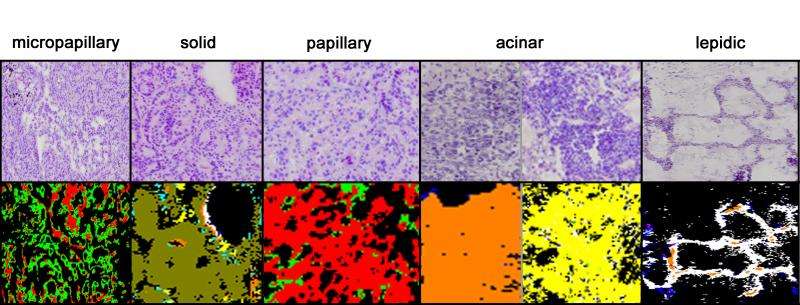'Spectral histopathology' facilitates prognosis regarding tumour aggressiveness

A new diagnostic method, namely spectral histopathology, facilitates marker-free detection of individual subtypes of lung cancers. It was developed by researchers at the PURE consortium at Ruhr-Universität Bochum (RUB). They have successfully applied it in collaboration with clinicians at the Ruhrlandklinik in Essen. It is an automatable imaging process which, by classifying specific forms of lung cancer, facilitates a prognosis regarding a tumour's aggressiveness. The team, headed by RUB Prof Dr Klaus Gerwert, compares the results of traditional diagnostic procedures with those of spectral histopathology in the journal Analyst.
Comparison with traditional tumour detection methods: specific treatment of patients
"Distinguishing between different subtypes of lung cancer is essential for making a prognosis regarding the progression of the disease," explains Klaus Gerwert from the protein research consortium PURE (Protein Research Unit Ruhr within Europe). "The precise diagnosis of tumour subtypes enables doctors to deploy personalised medicine and conducting a more target-specific and therefore more successful therapy in future." The research team compared the results gained through spectral histopathology (SHP) with those of traditional histological diagnostics. "Our results match the pathologists' diagnosis perfectly," says Dr Angela Kallenbach-Thieltges. "Accordingly, it has been an impressive demonstration of the method's potential for clinical diagnostics." The accuracy of SHP for detecting lung cancer subtypes (adenocarcinoma) is higher than 92 per cent, compared with traditional histopathology. Further studies with larger patient cohorts are still required to validate the method. "In future, we want to optimise the system and adapt it for other symptoms," adds Dr Frederik Großerüschkamp.
Dyeing of tissue sections not required for spectral histopathology
Unlike the methods available to date, SHP, which is now fully established at the RUB Department of Biophysics, does not require the tissue to be dyed with various markers in order to identify the cancer subtype. Pathologists commonly diagnose lung cancer by conducting a microscopic analysis of dyed thin tissue sections from a lung biopsy. Frequently, a diagnose cannot be made until an advanced stage, because the symptoms only appear once the disease is very progressed. Spectral histopathology, on the other hand, detects molecular changes to the tissue directly, especially protein changes, without any dyeing being necessary. As it operates with light rays, the thin tissue section from the biopsy can subsequently be examined with other methods, especially genome or proteome analyses.
Application in operating theatre possible
The SHP results can assist surgeons in making therapeutic decisions on the spot during a surgery. To this end, it has to be possible to deploy a spectral histopathology probe in the operating theatre. Moreover, the data could in future provide pathologists with a "second opinion" to aid their decision-making processes. In earlier studies, the PURE team tested SHP for colorectal cancer diagnosis.
More information: "Marker-free automated histopathological annotation of lung tumour subtypes by FTIR imaging," Analyst, DOI: 10.1039/C4AN01978D

















